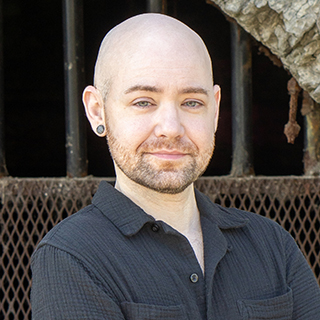Severance, on Apple TV, is a bizarre psychological thriller (and darkly comedic). It is also a fun way to explore Internal Family Systems (IFS), a therapeutic modality. Quick overview of the premise of the show: some people opt to be severed—to have their consciousness technologically split between a work consciousness (innie) and a personal life consciousness (outie). Neither knows anything about the other. They don’t share memories, and while they share some personality traits, they also diverge in key ways. The severance procedure was invented by a company called Lumon, and it is highly controversial in-universe. (This article contains spoilers for seasons 1 and 2.)
IFS: A model of multiplicity
IFS, which stands for Internal Family Systems, is a therapeutic model based on the idea that all people have multiple parts with different beliefs, feelings, physical experiences, and even memories. Right away, Severance gives us a visible example of this multiplicity, with innie parts and outie parts that don’t even share consciousness. This degree of fragmentation is more of an outlier example that would be associated with, for instance, someone who might be diagnosed with dissociative identity disorder (DID). Even so, the foundation is the same: different parts exist within us, and they all have some purpose. Severance demonstrates very well how different parts may collaborate and work together, or dislike one another and work against each other.
In the flow of our lives, parts emerge for different reasons, sometimes in response to distressing experiences. Some of these parts show up in our daily lives to help manage our responsibilities or respond to crises. These parts are often in our main awareness, and are known as managers and firefighters in the foundational IFS model. Other parts are tasked with carrying the pain from life events that we do not want to be aware of—these are known as exiles. Our systems exile these parts so that we don’t have to feel that pain they carry, and these parts can be either in or out of our awareness.
Understanding the presence, goals, and needs of our parts is core to the Internal Family Systems model. We can learn more about our parts and how they work together (or are in conflict) through the IFS process, and over time this work promotes inner clarity, confidence, calm, compassion, and more.
Parts on Severance
In the show, the reasons why each of the characters have chosen severance slowly unfold. Mark, the first character we meet, chose severance after his wife died because he wanted to have a break from the crushing grief. If we look at this through an IFS lens, he exiled the part of himself feeling grief by sign ing up to not know about it for the duration of his workday—to give him some relief. This is a classic example of an exiled part. Innie Mark, meanwhile, is very literally a manager, as he leads a team of severed employees at Lumon.
ing up to not know about it for the duration of his workday—to give him some relief. This is a classic example of an exiled part. Innie Mark, meanwhile, is very literally a manager, as he leads a team of severed employees at Lumon.
Helly, the newest addition to the team of severed characters, is on the outside Helena Eagan, daughter of the man who invented the severance process. She is a major proponent and decided to undergo the procedure as a way to champion it to the public, making a big show of how positive it is in creating “work/life balance.” Unlike Mark’s exiling of his own pain, her choice can be seen more as a manager attempting to make another manager to help her. Helena wants Helly to be a useful member of the corporate structure and a positive example to the public.
When parts start to interact
Helly (the innie personality) is miserable at Lumon and tries more than once to kill herself after discovering there is no way for her to leave. Helly can be seen as a firefighter responding to an unseen part of the system that feels horror and fear about this whole situation. Her active and intense sabotage of Helena’s goals is indicative of firefighter behavior.
We meet Helena first on video recordings she makes to be shown to Helly, in which she is quite cruel and tells Helly she’s not a person. Through an IFS lens, we call this a polarization: two parts in a conflict that can get quite intense, even brutal—as it does with Helly’s suicide attempts and Helena’s videos. In IFS therapy, we would work with each part to help them better understand each other, which usually leads to a big reduction in tension as they understand they both have important jobs, and might even share an agenda.
In season two, Mark (with the help of a former Lumon employee and some 80s style technology) attempts to reintegrate. While the procedure is imperfect, it does give Mark the opportunity for his innie and outie to communicate with each other. What outie Mark learns is that rather than simply wanting an escape, innie Mark has developed meaningful relationships with the other severed employees, including falling in love with Helly. Innie Mark learns that outie Mark doesn’t really consider him his own person, and uses this conversation to try to convince him otherwise.
The IFS model believes that all parts serve a purpose and want the best for the system, even if their methods are distressing or damaging in some way. The opportunity for innie Mark, a part created to serve a purpose, to express to outie Mark his own personhood is a powerful moment from an IFS lens. Outie Mark wants innie Mark to help him with his own goal, but innie Mark has his own agenda.
As these parts meet each other, they find a way to be in conversation and try to come to a shared understanding. While they are able to have a meaningful conversation, this understanding eludes them (for now). And indeed, in the final moments of season 2, innie Mark makes a decision for himself that outie Mark strongly disagrees with.
Seeking connection
Over the course of season one, the innies become increasingly distressed by the mysterious and abusive circumstances in which they are trapped. They seek ways to communicate what’s happening to their outies, which are all thwarted by the little-understood technology in the Lumon building that switches their personalities daily.
In the season 1 finale, the four have discovered a literal switch that will allow them to be their innie selves in the outside world, and come up with a plan to switch themselves so they can tell others what’s really happening inside Lumon. They hope that their innies will be able to connect with the lives of their outies to solve a problem: being trapped in the capitalist hellscape that is Lumon.
There’s a strong IFS theme running through the show: fragmentation causes distress. It becomes more and more important for the innies to know who their outies are—and the more connection is attempted, the more the outies realize that they need to know what is going on with these disowned parts, too, whether they like it or not.
In IFS, we talk about connectedness and clarity as two qualities of a well-functioning system. All the innies and outies on this show are, in one way or another, striving to connect with their counterparts and to understand why they chose severance in the first place. Such qualities arise through the work of putting parts in conversation with each other, and ultimately with a grounded self that can care for all parts.
Cultural burdens
Cultural burdens in IFS refer to the consequences of living with the -isms: the internalized stigmas and harms that racism, sexism, capitalism, and other oppressive systems inflict upon the individual. In Severance, Lumon, the mysterious company that employs all the main characters, represents capitalism, which is one type of cultural burden individuals must carry. Lumon, the capitalist overlord, has created a system (the severance process) in which people literally cannot escape their jobs.
We see the burden of capitalism represented in the show in a few ways. For instance, the four main characters are “macrodata refiners” who spend their days looking at a grid of numbers and choosing those that elicit emotions connected to four different “tempers.” They place these numbers in small boxes at the bottom of the screen.
What does macrodata refining even mean? What do the numbers mean, and what are the consequences of placing them in the box? The severed characters have no idea what their work is until very late in season two, after a great deal of effort to break out of Lumon’s constraints. This high degree of abstraction about the meaning of one’s work is a feature of capitalist work settings.
Changes to employee management designed to improve performance are called “kindness reforms.” These include things like melon parties (where employees are served melon balls) and random dance parties to increase morale. Participation in such events is, of course, mandatory, and employees are expected to enjoy these interludes and be more satisfied at work because of them.
There is an established IFS process for releasing cultural, and other, burdens. It requires truth-telling and fuller awareness about those burdens and their effects on the individual, which is something that Lumon’s entire system is set up to prevent. In this way, Lumon functions as a perfect example of how capitalism is antithetical to mental health.
I am curious to find out, as the show continues, how the main characters will continue to build communication, come to understand their choices to sever in the first place, and start to reconcile different parts that have their own desires and agendas (or if that’s even possible).

